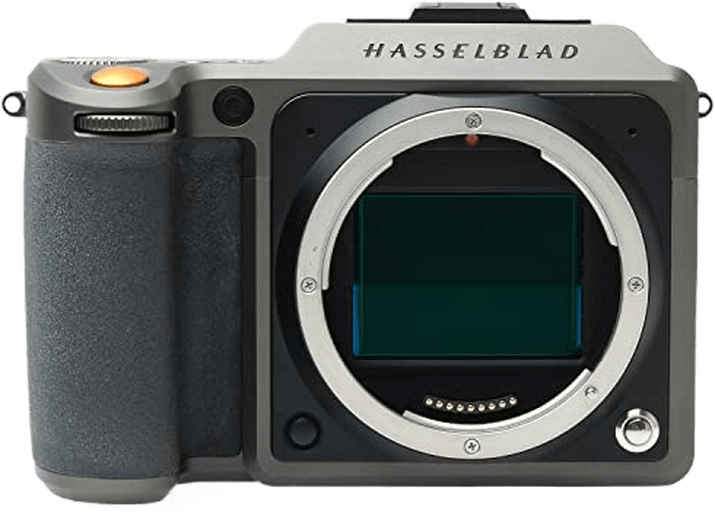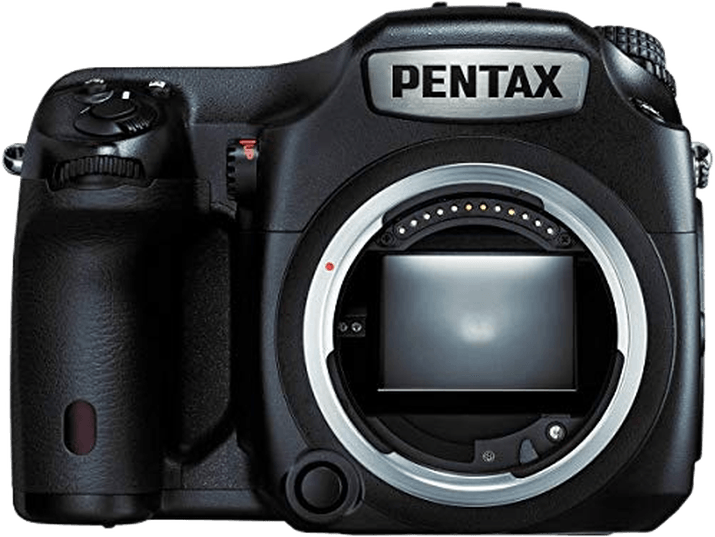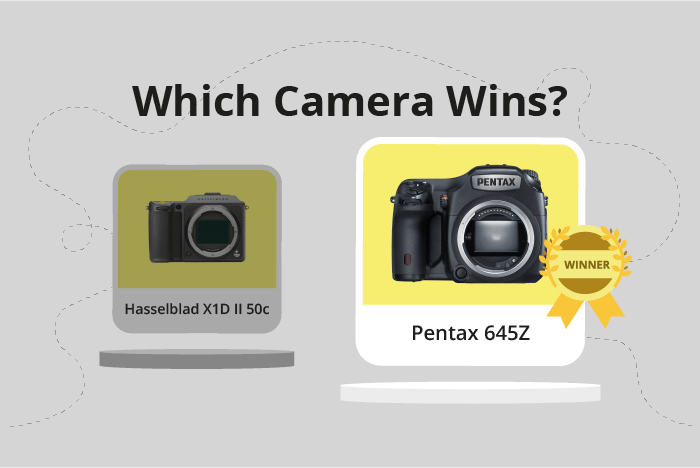Hasselblad X1D II 50c vs Pentax 645Z Comparison
Hasselblad X1D II 50c

Pentax 645Z

The Pentax 645Z narrowly edges out the Hasselblad X1D II 50c with a score of 73/100 compared to Hasselblad’s 72/100. Both cameras share common specifications, such as being medium format cameras and having similar launch prices. However, the Hasselblad X1D II 50c has a more compact size (148 x 97 x 70mm) and is significantly lighter (766g) compared to the Pentax 645Z (156 x 117 x 123mm and 1550g).
On the other hand, the Pentax 645Z, being a DSLR, has been on the market since 2014, giving it a longer track record and a slightly higher score. While both cameras have their strengths, the Hasselblad X1D II 50c offers better portability, whereas the Pentax 645Z has a longer market presence. Ultimately, the choice between the two depends on the user’s preferences and requirements.
Hasselblad X1D II 50c vs Pentax 645Z Overview and Optics
The Pentax 645Z outperforms the Hasselblad X1D II 50c in optics, scoring 79/100 compared to the Hasselblad’s 68/100. Both cameras share some specifications, such as having a CMOS sensor, medium format sensor size, and no image stabilization. However, there are key differences that contribute to the Pentax 645Z’s higher score.
One area where the Pentax 645Z excels is its megapixels, with 51.4 compared to the Hasselblad X1D II 50c’s 50 megapixels. This difference allows the Pentax 645Z to capture more detail in images. Additionally, the Pentax 645Z has a faster shooting speed of 3 frames per second (fps), while the Hasselblad X1D II 50c has a shooting speed of 2.7 fps. The faster shooting speed is beneficial for action and sports photography.
The Pentax 645Z also has a significantly higher DXOMARK sensor score of 101, compared to the Hasselblad X1D II 50c’s score of 72. This indicates superior overall image quality, including better low-light performance and dynamic range. Furthermore, the Pentax 645Z uses the Prime III processor, while the Hasselblad X1D II 50c has an unspecified processor.
The Hasselblad X1D II 50c does have its advantages, such as a Hasselblad X lens mount which offers compatibility with high-quality Hasselblad lenses. However, the Pentax 645Z has a Pentax 645AF2 lens mount, which also supports a variety of quality lenses.
Considering these points, the Pentax 645Z is the better choice for those prioritizing optics performance, with its higher megapixel count, faster shooting speed, and superior sensor score. The Hasselblad X1D II 50c may still appeal to some photographers, particularly those who value the compatibility with Hasselblad lenses.
Hasselblad X1D II 50c vs Pentax 645Z Video Performance
The Pentax 645Z outperforms the Hasselblad X1D II 50c in video capabilities, boasting a 20-point higher score of 70/100 compared to the Hasselblad’s 50/100. Both cameras share some common video specifications, such as the ability to record video and adjustable video frame rates.
The Pentax 645Z excels with its Full HD (1920 x 1080) max video resolution and a higher max video frame rate of 60fps. This allows for smoother and more detailed video recording. Additionally, the Pentax 645Z has built-in time-lapse functionality, which expands creative possibilities for videographers and photographers alike.
On the other hand, the Hasselblad X1D II 50c offers a max video resolution of 2.7K (2720 x 1530), which is higher than the Pentax 645Z’s Full HD. However, it falls short in other aspects, such as a lower max video frame rate of 30fps and the absence of built-in time-lapse functionality.
In comparing the video capabilities of these two cameras, it is clear that the Pentax 645Z is superior due to its higher video score, Full HD resolution, faster max video frame rate, and built-in time-lapse functionality. The Hasselblad X1D II 50c does have a higher max video resolution, but it lacks the other features that make the Pentax 645Z a more versatile and capable video tool.
Hasselblad X1D II 50c vs Pentax 645Z Features and Benefits
The Hasselblad X1D II 50c outperforms the Pentax 645Z with a feature score of 87/100 compared to 59/100. Both cameras share some common specifications, such as having a screen, GPS, and WIFI capabilities. However, the Hasselblad X1D II 50c surpasses the Pentax 645Z in certain aspects, while the Pentax 645Z has a unique advantage of its own.
The Hasselblad X1D II 50c boasts a larger screen size of 3.6 inches compared to the 3.2 inches of the Pentax 645Z. Additionally, the X1D II 50c has a higher screen resolution of 2,360,000 dots, while the 645Z has 1,037,000 dots. This results in a clearer and more detailed display on the Hasselblad X1D II 50c. The X1D II 50c also features a touchscreen, which provides a more intuitive user experience. Furthermore, the Hasselblad X1D II 50c is equipped with GPS and Bluetooth connectivity, making it more versatile in terms of location tracking and wireless connections.
On the other hand, the Pentax 645Z offers a flip screen, which allows for more flexible shooting angles and better framing in certain situations. This feature is not available on the Hasselblad X1D II 50c.
Taking these specifications into account, the Hasselblad X1D II 50c is the superior camera in terms of features, with a larger and higher-resolution screen, touchscreen capabilities, and additional connectivity options. The Pentax 645Z, while scoring lower in overall features, does provide the advantage of a flip screen for more versatile shooting.
Hasselblad X1D II 50c vs Pentax 645Z Storage and Battery
The Pentax 645Z surpasses the Hasselblad X1D II 50c in storage and battery with a score of 65/100 compared to 49/100. Both cameras share similarities, including two memory card slots and compatibility with SD, SDHC, and SDXC cards. Neither camera offers USB charging.
The Pentax 645Z excels in battery life, providing 650 shots per charge, compared to the X1D II 50c’s 300 shots. This longer battery life makes the 645Z more suitable for extended shooting sessions. However, the Hasselblad X1D II 50c features a 3400 mAh li-ion battery, which is more powerful than the Pentax 645Z’s D-LI90 battery. This advantage does not translate to better battery life but may impact the camera’s overall performance.
Considering both cameras, the Pentax 645Z is the better option for storage and battery, primarily due to its longer battery life. The Hasselblad X1D II 50c’s higher capacity battery does not compensate for its shorter battery life, making the 645Z a more practical choice for photographers prioritizing these features.
Hasselblad X1D II 50c vs Pentax 645Z – Our Verdict
Are you still undecided about which camera is right for you? Have a look at these popular comparisons that feature the Hasselblad X1D II 50c or the Pentax 645Z:

